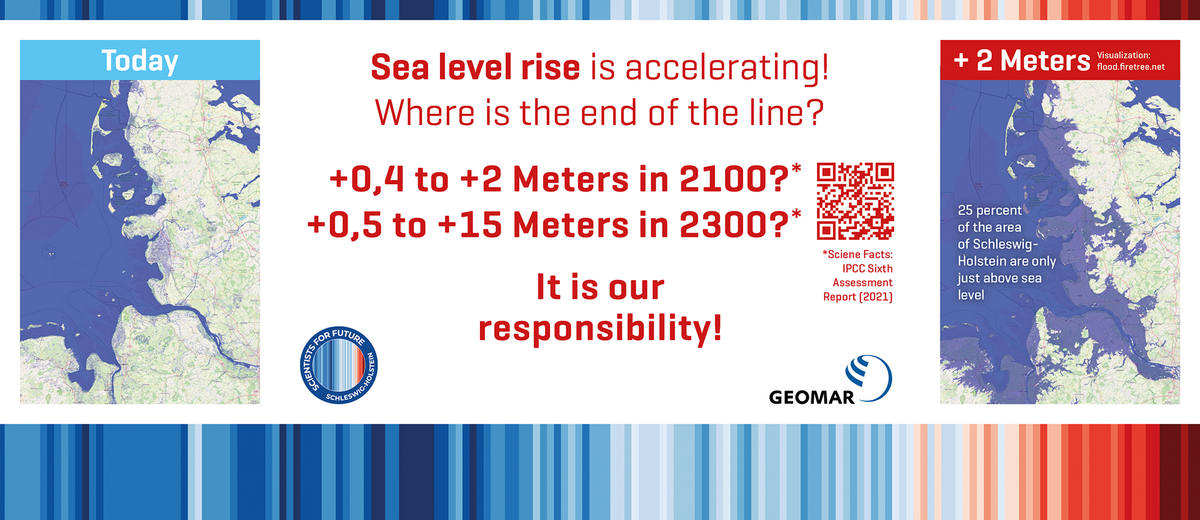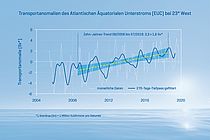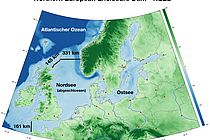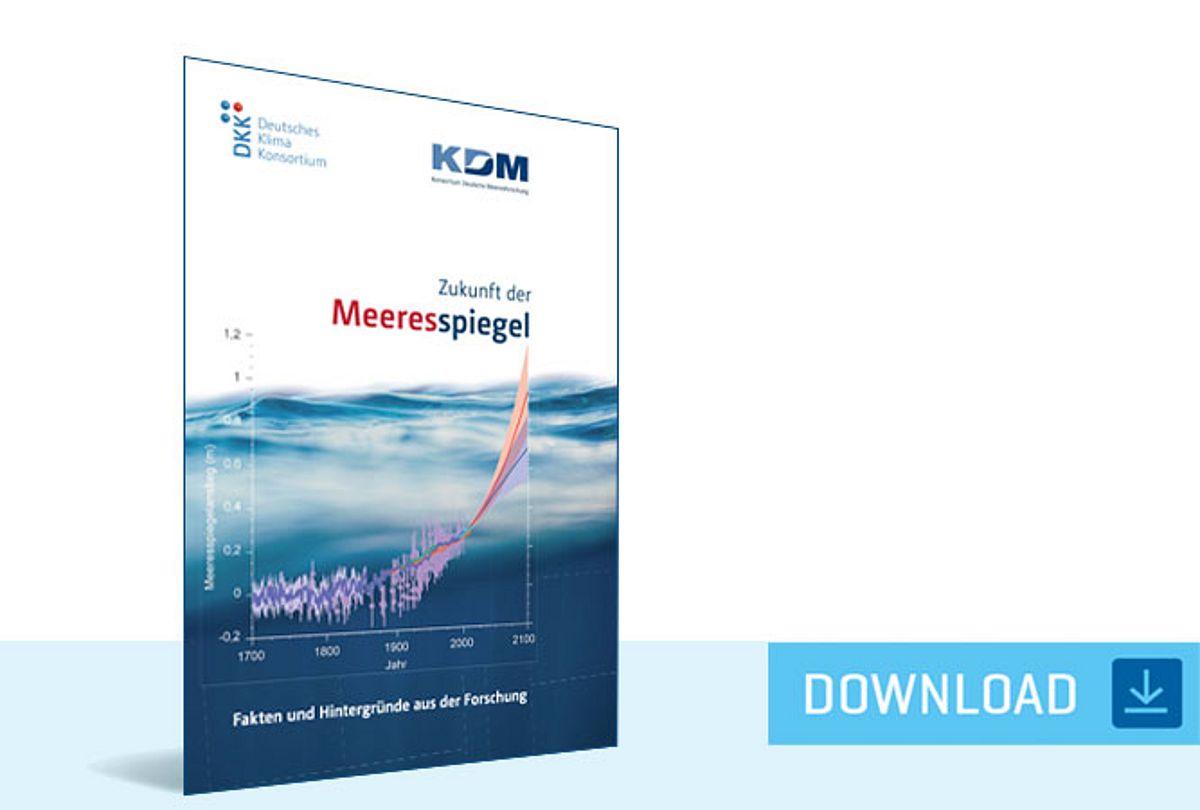Sea Level Rise is Accelerating! Where is the End of the Line?
Scientific Background
Due to human-induced climate change, sea levels are rising worldwide. Since the beginning of industrialisation, sea levels have already risen by 20 centimetres due to global warming, and the rise has accelerated significantly from 1.4 millimetres per year at the beginning of the 19th century to 3.7 millimetres per year in the last decade. The projections of global sea level rise up to the years 2100 and 2300 mentioned on the poster are based on a recent report of the Intergovernmental Panel on Climate Change (IPCC), published in August 2021. Here you can find additional information that explains the figures on the poster in more detail.
1: +0.4 to +2 metres in 2100?
Whether global sea level will rise by +0.4 m or by up to +2 m by 2100 depends very much on future global greenhouse gas emissions and the associated global warming. Therefore, the IPCC calculates with different emission scenarios (Fig. 1a):
In the worst-case scenario, we continue as before (business as usual, SSP5-8.5) and greenhouse gas emissions continue to rise over the next decades. As a result, the Earth warms by about +4.4°C (3.3°C to 5.7°C) by 2100. In this case, we have to expect a global sea level rise in 2100 of at least +1.0 m (+0.8 m to +1.2 m, Fig. 1b). Because the melting of the Greenland and Antarctic ice sheets is difficult to predict and can happen much faster than previously assumed, the sea level can also rise by up to +2.0 m by the year 2100, according to the latest assessments.
In the best-case scenario, very ambitious climate protection reduces greenhouse gas emissions as of 2025 and climate neutrality is achieved globally in 2055 (SSP1-1.9). After 2055, global emissions are negative, which means CO2 is removed from the atmosphere. In this case, we have a good chance of meeting the goals of the Paris Agreement, because according to the IPCC projections, the Earth warms by +1.4°C (1.0°C to 1.8°C) by 2100, and the global sea level will rise by only +0.5 m (+0.4 m to +0.7 m, Fig. 1b).
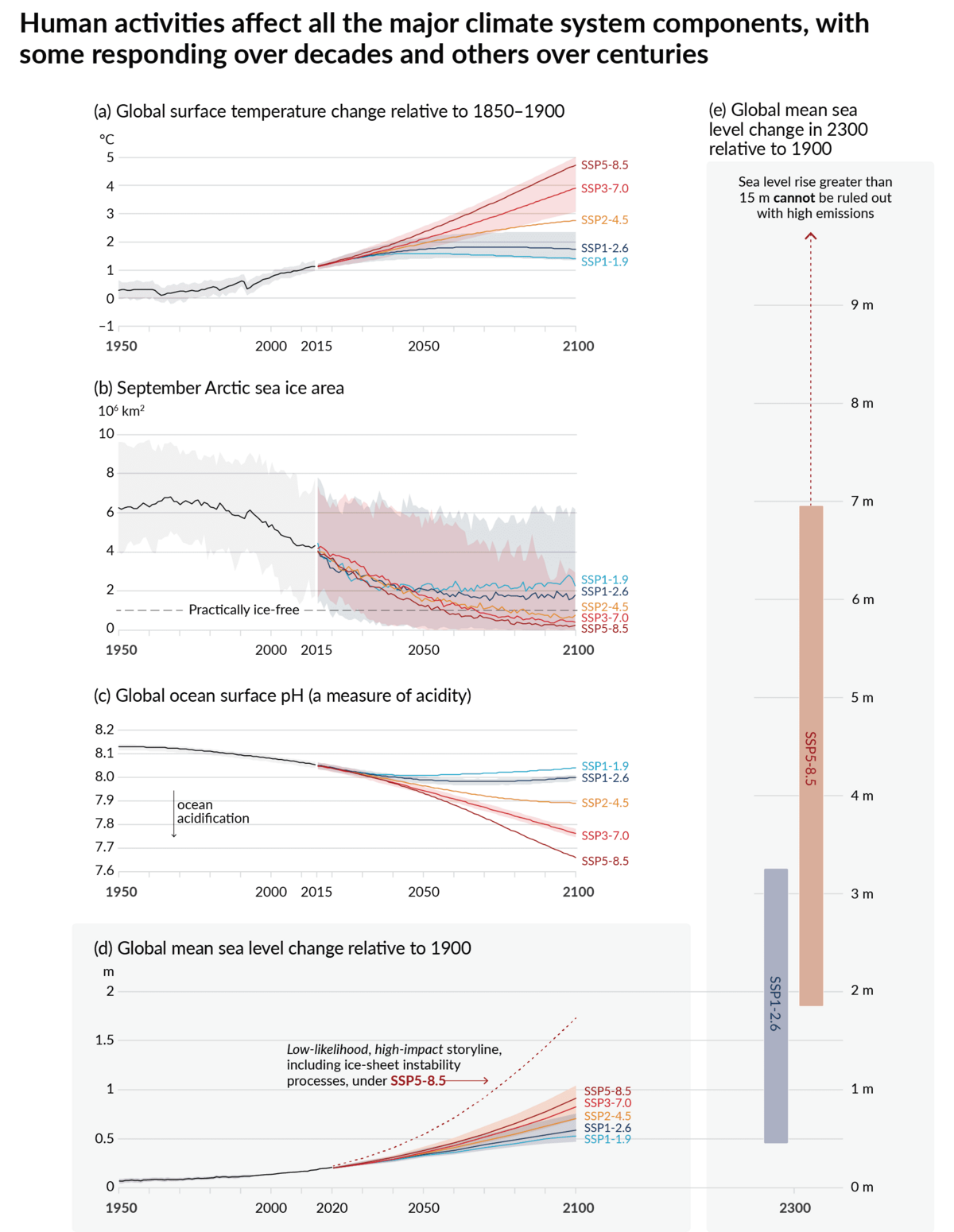
2: +0.5 to +15 metres in 2300?
Since the Earth's glaciers react to climate warming with a long time lag due to their inertia, long-term projections of sea level rise are important to remind us of our responsibility for future generations. Depending on how ambitious climate action we take, IPCC projections predict sea level rise between +0.5 m to +15 m by 2300 (Fig. 1c).
In the worst case, the "business-as-usual" scenario (SSP5-8.5), greenhouse gas emissions decrease from 2100, but due to still high emissions and climate inertia, the Earth warms to +7°C to +14°C by 2300. In this case, sea level will rise between +2 m and +7 m by 2300. Here, too, the sea-level rise can be significantly higher than previously assumed, at up to +15 m, because it is difficult to predict how quickly the ice sheets of Greenland and Antarctica will melt.
In the best case, through very ambitious climate protection (SSP1-2.6), we stabilise the CO2 content of the atmosphere at a level like at the beginning of the 21st century (~390 ppm) and thus limit global warming to about 1.5°C (1.1°C to 2.2°C) in the long term. Nevertheless, due to the inertia of the ice sheets, global sea levels would rise by +0.5 m to +3.2 m by the year 2300.
Since our climate system is very complex, the further we look into the future, the more difficult it becomes to accurately predict global warming and sea level rise, as can be seen from the possible range within the scenarios. The bottom line, however, is that in the case of sea level rise, as in many other areas that we will not go into here, it makes a very big difference how ambitiously we protect the climate in the coming decades.
3: 25 percent of Schleswig-Holstein's area is only just above sea level
Global sea level rise threatens low-lying coastal regions worldwide. But in Schleswig-Holstein, too, almost 25 % of the state's land area is only just above sea level and is therefore massively threatened by sea-level rise. This is mostly the marshland on the North Sea coast, but also some areas on the Baltic Sea coast. According to the state government of Schleswig-Holstein, more than 350,000 people live in this area and there are material assets worth 49 billion euros.
More information (in German) at www.schleswig-holstein.de
To illustrate which regions in Schleswig-Holstein are particularly threatened by sea level rise, the map on the right-hand side of the poster shows which areas would be below sea level in the event of a sea level rise of +2 m (worst-case scenario in 2100) and would therefore have to be protected against flooding at great expense. But dykes cannot be raised at will, and as sea levels rise, it becomes more and more costly to drain the areas then below sea level via the sea using pumping stations.
Map section on Flood Maps.


